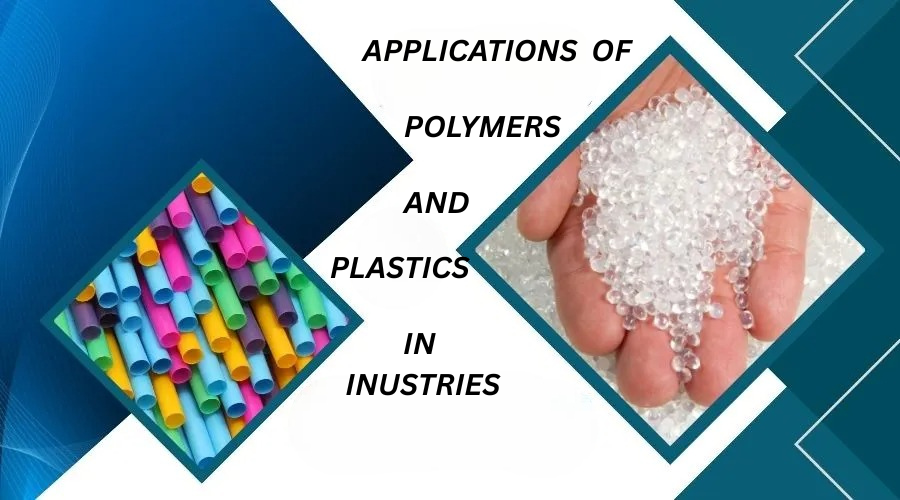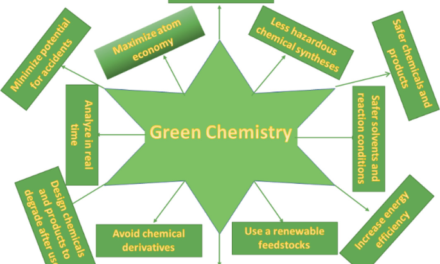Polymers and plastics are versatile materials used across a wide range of industries due to their diverse properties, including lightweight, durability, flexibility, and chemical resistance. Here’s a comprehensive look at their significant applications in sectors:
1. Packaging Industry
- Applications:
- Plastic bags, bottles, films, containers, and wraps.
- Food packaging for preserving freshness and preventing contamination.
- Flexible and rigid packaging solutions for consumer goods.
- Common Polymers:
- Polyethylene (PE): Grocery bags, stretch wraps.
- Polypropylene (PP): Food containers, bottle caps.
- Polyethylene Terephthalate (PET): Bottles for beverages and oils.
- Advantages:
- Lightweight, cost-effective, and resistant to moisture.
2. Construction and Infrastructure
- Applications:
- Pipes for water and gas distribution.
- Insulation materials for thermal and soundproofing.
- Flooring, roofing membranes, and window profiles.
- Structural components, adhesives, and sealants.
- Common Polymers:
- Polyvinyl Chloride (PVC): Pipes, window frames.
- Polyurethane (PU): Insulation foams.
- Polystyrene (PS): Insulation panels.
- Advantages:
- High durability, resistance to corrosion, and cost-efficiency.
3. Automotive and Transportation
- Applications:
- Lightweight components for fuel efficiency (bumpers, dashboards).
- Interior trims, seats, and upholstery.
- Tires, seals, and gaskets.
- Composite materials for body panels and aerodynamic components.
- Common Polymers:
- Polypropylene (PP): Dashboards, trims.
- Acrylonitrile Butadiene Styrene (ABS): Body panels.
- Polycarbonate (PC): Headlight lenses.
- Rubber (synthetic and natural): Tires.
- Advantages:
- Lightweight, impact resistance, and reduced fuel consumption.
4. Electronics and Electrical
- Applications:
- Insulators for wires and cables.
- Housings for electronic devices (e.g., phones, laptops, appliances).
- Printed circuit boards and connectors.
- Protective casings and components for high-voltage applications.
- Common Polymers:
- Polycarbonate (PC): Electrical housings.
- Polyvinyl Chloride (PVC): Wire insulation.
- Epoxy Resins: Circuit boards.
- Advantages:
- Excellent insulating properties, heat resistance, and flame retardancy.
5. Medical and Healthcare
- Applications:
- Disposable syringes, IV bags, and tubing.
- Medical implants, prosthetics, and dental devices.
- Sterile packaging for drugs and instruments.
- Biodegradable polymers for drug delivery systems.
- Common Polymers:
- Polypropylene (PP): Syringes, medical trays.
- Polylactic Acid (PLA): Biodegradable implants.
- Polyurethane (PU): Catheters, surgical dressings.
- Advantages:
- Sterility, biocompatibility, and lightweight.
6. Aerospace Industry
- Applications:
- Lightweight composites for aircraft bodies and interiors.
- Insulation materials for spacecraft.
- Transparent windows and canopies.
- Seals, adhesives, and coatings for extreme conditions.
- Common Polymers:
- Carbon Fiber-Reinforced Polymers (CFRP): Aircraft wings, fuselage.
- Polytetrafluoroethylene (PTFE): Heat-resistant components.
- Polyimides: High-temperature insulation.
- Advantages:
- Lightweight, high strength, and thermal stability.
7. Agriculture
- Applications:
- Greenhouse films, mulch films, and irrigation pipes.
- Packaging for fertilizers and pesticides.
- Storage bins and silos.
- Common Polymers:
- Low-Density Polyethylene (LDPE): Greenhouse films.
- Polypropylene (PP): Twine, netting.
- Advantages:
- Weather resistance, UV protection, and cost-effectiveness.
8. Textiles and Apparel
- Applications:
- Synthetic fibers for clothing, carpets, and industrial fabrics.
- Protective gear and athletic wear.
- Ropes, nets, and geotextiles for infrastructure projects.
- Common Polymers:
- Nylon: Stockings, ropes, fishing nets.
- Polyester: Fabrics, carpets.
- Spandex: Elastic textiles.
- Advantages:
- Durability, flexibility, and resistance to wear and tear.
9. Consumer Goods
- Applications:
- Household items like containers, toys, furniture, and kitchenware.
- Sports equipment (helmets, balls, shoes).
- Personal care products like toothbrushes and combs.
- Common Polymers:
- Polypropylene (PP): Storage boxes, toys.
- Acrylonitrile Butadiene Styrene (ABS): Sporting goods.
- High-Density Polyethylene (HDPE): Furniture.
- Advantages:
- Cost-efficiency, lightweight, and durability.
10. Energy Sector
- Applications:
- Insulation for power cables and transformers.
- Components for wind turbines and solar panels.
- Pipelines for oil and gas transportation.
- Common Polymers:
- Cross-linked Polyethylene (XLPE): Cable insulation.
- Epoxy Resins: Wind turbine blades.
- Polyethylene (PE): Gas pipelines.
- Advantages:
- Weather resistance, thermal stability, and mechanical strength.
11. Industrial Applications
- Applications:
- Conveyor belts, gears, and bearings.
- Adhesives, sealants, and coatings.
- Tanks, barrels, and containers for chemicals.
- Common Polymers:
- Polyurethane (PU): Industrial coatings, foams.
- High-Performance Polymers (e.g., PEEK, PPS): Bearings, gears.
- Advantages:
- Chemical resistance, wear resistance, and high durability.
12. Environmental and Sustainable Applications
- Applications:
- Biodegradable packaging and products.
- Waste management containers and compost bins.
- Components for renewable energy systems (e.g., solar panels).
- Common Polymers:
- Polylactic Acid (PLA): Compostable bags, utensils.
- Polyethylene Terephthalate (PET): Recycled into new products.
- Advantages:
- Reduced environmental impact, recyclability, and biodegradability.
13. Defense and Security
- Applications:
- Ballistic shields, helmets, and body armor.
- Protective coatings and camouflage materials.
- Components for military vehicles and equipment.
- Common Polymers:
- Kevlar: Body armor.
- Polycarbonate (PC): Riot shields.
- High-Density Polyethylene (HDPE): Protective cases.
- Advantages:
- High strength-to-weight ratio and impact resistance.
Conclusion
Polymers and plastics are indispensable materials across industries, driving innovation and efficiency in manufacturing, construction, healthcare, and more. Their versatility, cost-effectiveness, and adaptability to specific requirements make them essential for modern applications. With advancements in bio-based and sustainable polymers, their role in creating environmentally friendly solutions continues to grow.
Hashtags
#PolymerApplications #PlasticApplications #PlasticsInIndustry #PolymersInIndustry #PlasticsForManufacturing #AutomotiveIndustry #AutomotivePlastics #PlasticInAutomotive #PolymerParts #LightweightAutomotiveMaterials #CarInteriorPlastics #PackagingIndustry #PlasticPackaging #SustainablePackaging #PackagingPlastics #PolymersInPackaging #FlexiblePackaging #MedicalandHealthcare #MedicalPlastics #HealthcarePolymers #MedicalDevicePlastics #BiocompatiblePolymers #PolymerForMedicalApplications #ElectronicsandElectrical #ElectronicsPlastics #ElectricalPolymers #PlasticInElectronics #ConductivePolymers #PolymerInsulation

















